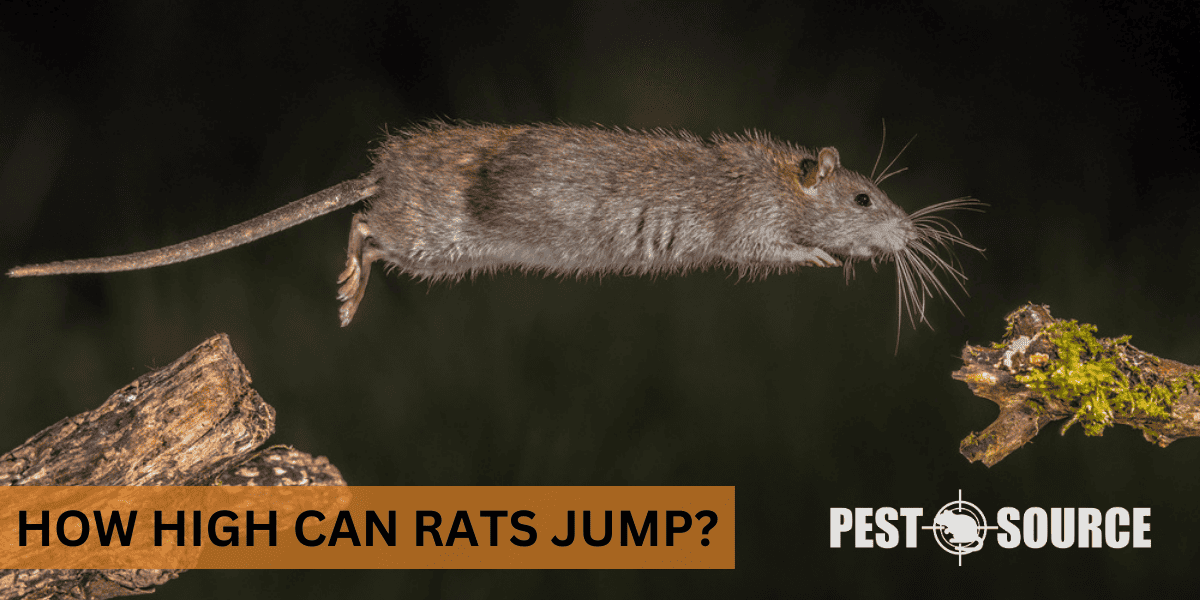Rats are capable of jumping vertically up to about 36 inches and horizontally up to 48 inches. This post will discuss the physical abilities of rats in terms of their agility and the implications for preventing rat infestations. Understanding rats’ jumping capabilities is crucial for effective pest-proofing and control strategies.
POINTS
- Rats can leap vertically up to 36 inches and horizontally around 48 inches, with factors such as species, age, physical condition, and anatomical adaptations influencing their jumping ability.
- The musculoskeletal structure of rats, including strong hind leg muscles and a flexible spine, is specialized for powerful jumps, aiding in their survival tactics like escaping predators and accessing food.
- Rats’ jumping capabilities are generally superior to those of mice but less than squirrels, who can leap much further due to their specialized anatomy.
- Understanding rat jumping abilities is crucial for designing effective pest control strategies, such as constructing higher barriers and properly placing traps.
- There are still unanswered questions and areas for future research regarding the limits and variations of rat jumping abilities, which could further inform pest management practices.
Jumping Ability of Rats
Rats are surprisingly agile creatures known for their ability to navigate through complex environments, which includes their impressive jumping skills. A common question that arises when discussing rat behavior is: How high can rats jump? On average, rats can leap vertically up to 36 inches and horizontally around 48 inches. However, this can vary based on several factors.
Factors Influencing a Rat’s Jumping Ability
Several factors can significantly influence a rat’s jumping ability:
- Species: Different species of rats have varying physical capabilities. For instance, the common brown rat (Rattus norvegicus) may have a different jumping reach compared to the black rat (Rattus rattus).
- Age: Younger rats are typically more agile and can jump higher than older rats, whose physical abilities may decline with age.
- Physical Condition: A rat in good health and physical condition can jump higher than one that is not. Factors like injury or malnourishment can impede their ability to jump.
- Anatomical Adaptations: Rats have powerful hind legs and a flexible spine, which contribute to their jumping prowess.
Comparison with Similar Rodents
Rats, mice, and squirrels all belong to the rodent family but have distinct jumping abilities:
- Mice: Generally, mice have a vertical jumping ability of about 12 inches, which is less than that of rats.
- Squirrels: Squirrels are known for their extraordinary jumping ability, often reaching distances far greater than both rats and mice, due to their specialized hind limb muscles and bushy tails that help with balance.
Rat Jumping Mechanics and Behavior in Different Contexts
Understanding the mechanics and behavior of rat jumping can provide insights into their survival tactics and how they interact with their environment.
Anatomy and Physiology Behind Rats’ Jumping
Rats have a specialized musculoskeletal structure:
- Muscle Structure: Rats have strong hind leg muscles that allow for powerful jumps.
- Body Size: The compact size of rats aids in their agility and ability to leap to great heights relative to their body size.
- Limb Length: Their long hind limbs are proportionally suited to jumping.
Behavior in Different Scenarios
Rats jump in various scenarios:
- Escaping Predators: When threatened, rats can use their jumping ability to quickly escape danger.
- Accessing Food: Rats may jump to reach food sources that are elevated or across gaps.
- Running vs. Stationary: A rat’s jumping behavior changes depending on whether it is moving or still. A running start can lead to a longer jump, while from a stationary position, the jump may be shorter but quicker.
Human Perception and Misconceptions About Rat Jumping
Many people harbor common myths and fears about rats, such as the belief that they will jump at humans. This is largely unfounded, as rats usually jump to escape rather than attack. The psychological impact of witnessing a rat jump can be startling, leading to exaggerated perceptions of their abilities.
Some might think rats can jump unusually high because of their quick, unexpected movements, which can be unnerving. It’s this element of surprise that often makes their jumping behavior noteworthy.
Can Rats Climb?
Rats are excellent climbers and can ascend vertical surfaces, pipes, cables, and other structures due to their sharp claws and agile bodies. They are often observed scaling walls and can navigate narrow passages and wires with remarkable balance and dexterity. This agility allows them to access food sources and nesting areas, making them adept at surviving in various environments, from urban settings to natural landscapes. Their climbing prowess is a key reason why rat-proofing buildings involves sealing up even high potential entry points.



